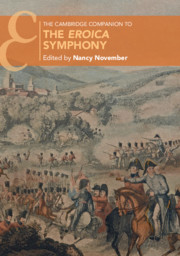Book contents
- The Cambridge Companion to the Eroica Symphony
- Cambridge Companions to Music
- The Cambridge Companion to the Eroica Symphony
- Copyright page
- Contents
- Illustrations
- Musical Examples
- Notes on Contributors
- Eroica Chronology, 1770–2020
- Acknowledgements
- Introduction
- Part I Context and Genesis
- Part II Analytical Approaches
- Part III Reception
- Further Reading
- General Index
- References
Further Reading
Published online by Cambridge University Press: 04 June 2020
- The Cambridge Companion to the Eroica Symphony
- Cambridge Companions to Music
- The Cambridge Companion to the Eroica Symphony
- Copyright page
- Contents
- Illustrations
- Musical Examples
- Notes on Contributors
- Eroica Chronology, 1770–2020
- Acknowledgements
- Introduction
- Part I Context and Genesis
- Part II Analytical Approaches
- Part III Reception
- Further Reading
- General Index
- References
Summary

- Type
- Chapter
- Information
- The Cambridge Companion to the Eroica Symphony , pp. 256 - 263Publisher: Cambridge University PressPrint publication year: 2020

